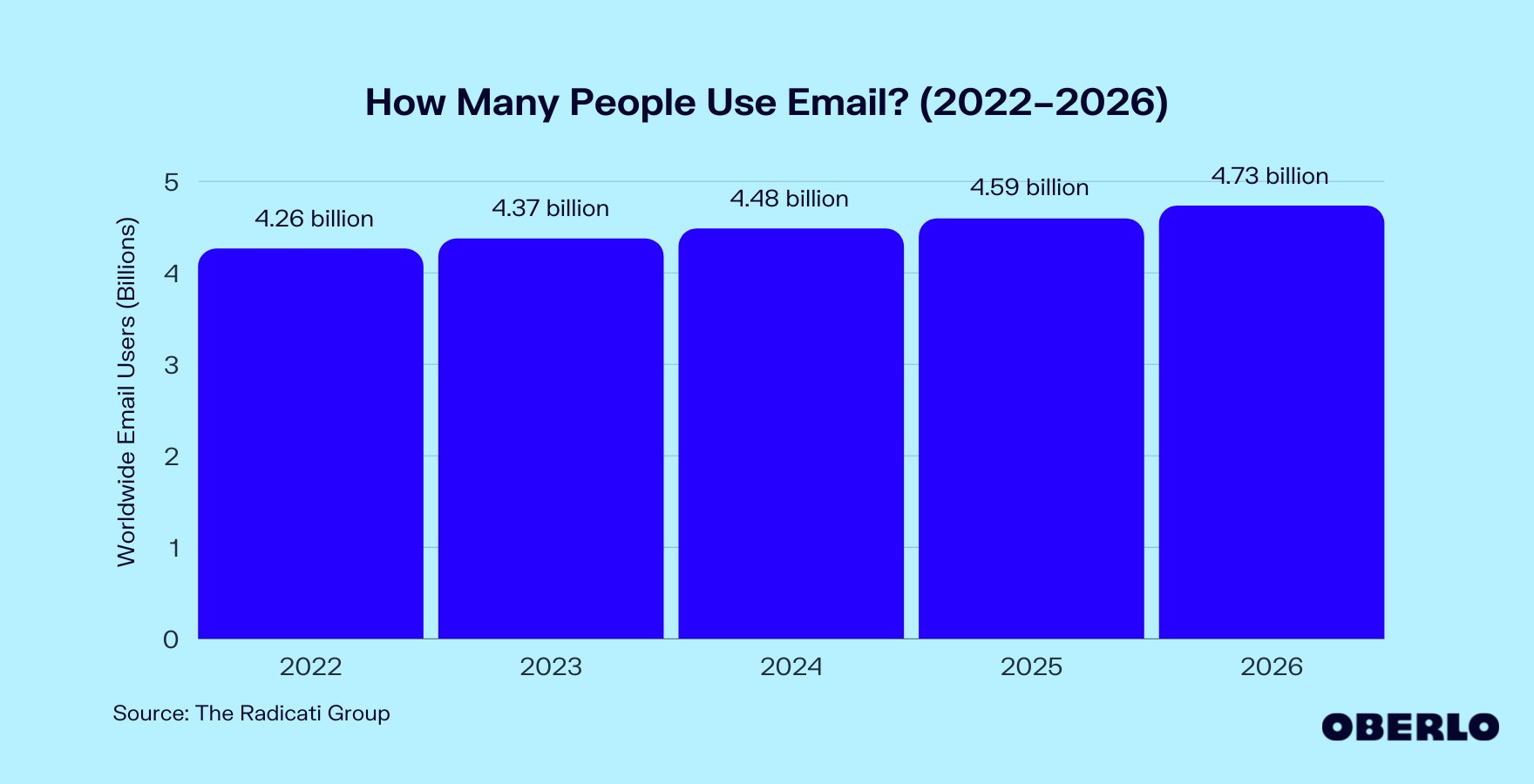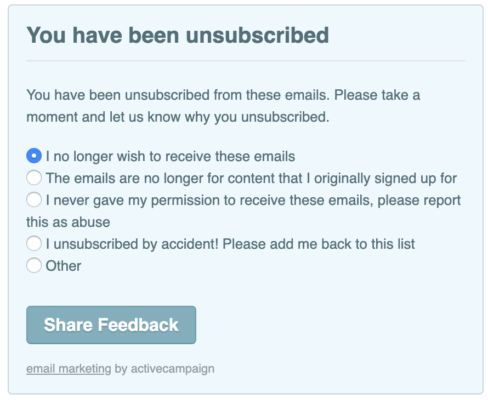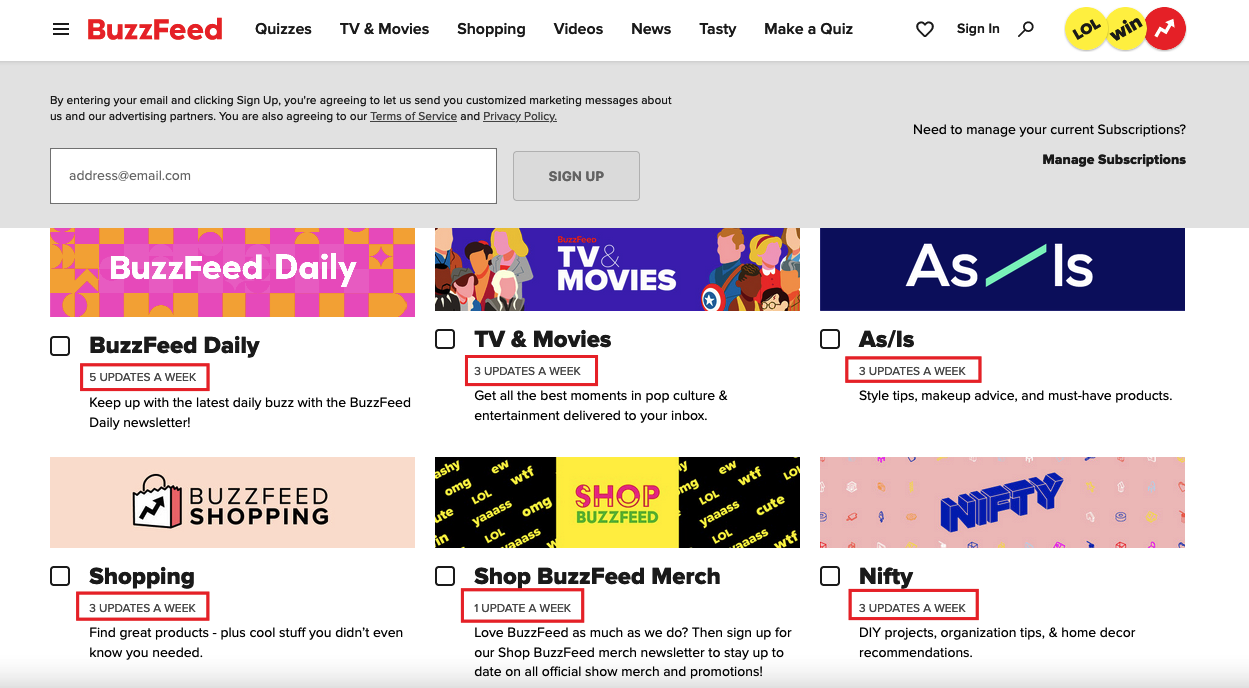Thanks to the team at Moosend to have written this great blog post. I hope you'll like it as much as we do!
In the digital realm of 2023, a privileged spot in a full inbox seems like the ultimate honor for email marketing professionals. This means that your engagement rates are still up and running, and you can tap into the goldmine of email users:
But what happens when you’re noticing soft and hard bounces and your email campaigns go to spam? What happens when all this is happening even though you’ve followed all the email best practices down to a tee?
Well, perhaps you haven’t cleaned your list like you were supposed to. So, let’s see what you can do to boost your email marketing efforts.
Email List Cleaning: What It Is and Why You Need It
Email list cleaning is one of the staples of your email marketing strategy. Essentially, when we’re talking about email list cleaning, we’re referring to the act of removing emails that are outdated, no longer in use, spam accounts, contacts that don’t engage with your email list, etc.
Generally speaking, it’s an act that increases engagement and can help you score the very lucrative email ROI of $40 for every $1 spent.
However, the email ROI and a high engagement rate are not the only reasons why you need to maintain a clean email list. Remember how we spoke about a privileged spot in a full inbox? Maintaining a clean email list can help improve your inbox placement and ensure your emails won’t reach the spam folder instead of the inbox.
More often than not, email lists contain email addresses that are invalid, not in use anymore, or belong to users who haven’t interacted with your content in a while. Emailing these addresses can harm your sender reputation, make your emails bounce, or lead to a high number of spam complaints.
Now, email bounces and low open rates can have several negative impacts on your email marketing efforts:
- Reputation damage: Email service providers use bounce rates as one of the factors to determine your sender reputation. High bounce rates can damage your reputation, leading to more emails landing in the spam folder or being blocked entirely.
- Wasted resources: Sending emails that are not opened or are bounced is a waste of time, money, and effort spent on creating and sending those emails.
- Difficulty in analysis: High bounce and low open rates can make it difficult to accurately analyze the performance of your email campaigns. It's challenging to determine the effectiveness of your content or strategy when a large portion of your emails are not even reaching the intended recipients.
- List decay: Email lists naturally decay over time as people change email addresses, abandon old accounts, or unsubscribe. However, high bounce rates can accelerate this process, reducing the size of your active audience.
These can, in turn, harm your deliverability and your email marketing strategy as a whole. Email scrubbing or email list cleaning is the only surefire method to improve your open rate and CTR, apart from your email deliverability. This is why a popular email newsletter software like Mailchimp or Moosend usually sports email list cleaning tools.
But how are you going to curate your email list in a way that will bring you straight to a user’s inbox?
5 Ways to Clean Your Email List
Email list scrubbing should happen more or less about once a year, depending on the size of your list and the number of emails that you’re sending. Keep in mind this is a general rule of thumb - for example, it makes sense to clean your email list after a huge email campaign.
But let’s get a little more specific.
Your Unsubscribe Button
A couple of days ago, I bumped into a social media post that described how much the user hated brands that don't include a visible unsubscribe button in their email marketing campaigns. This is a fairly common complaint among users, and while you may think that you shouldn’t make it easy for them to bounce, the reality is quite different.
Allowing users to opt out whenever they want is, quite literally, half the job done for you and your brand. That way, you get to keep interacting with users who like you and will give your brand a chance with a purchase or increased engagement down the line.
On the other hand, if you’re a brand that doesn’t allow users to opt out that easily, perhaps you’ll need to think this through. Not including an unsubscribe button or making it difficult to unsubscribe will result in increased spam complaints. If a user can’t leave your mailing list, they’ll mark your emails as spam, greatly harming your sender reputation, your deliverability rates, your cold outreach efforts, and pretty much any tactic you use to engage with users through email.
This is because ISPs lose trust in your brand and the value of your emails. The more spam complaints you have, the worse for your reputation. They’ll start blocking your emails from ever reaching the inbox, which is not easy to reverse.
Just refrain from keeping email addresses hostage. The best thing to do is to provide actual value through your emails - and this means having a clear unsubscribe process in place as well.
Re-Engage or Delete Emails
Some users don’t engage with your content because they don’t like it, while others are just inactive overall.
Before removing a user from your email list, make sure you follow two crucial steps:
- Send an email asking whether or not the user would like to be removed from your list. Disengaged subscribers could change their minds with a little discount or even being reminded of the reasons why they subscribed in the first place.
- Use an email opt-out page or message, like this one:
That way, those who opted out by accident will know how to proceed, whereas you’ll know why the rest of your subscribers opted out.
Don’t shy away from asking what your users would like to see in your next email marketing campaign. Sometimes users just won’t open any promotional emails or even newsletters because they’re just fed up. To remedy that, create a survey or a poll and try to understand what content types they’d like to see from you. Perhaps what you’re missing is more gamification, or perhaps you need better offers.
Lastly, make sure you keep your promise when it comes to disengaged and inactive users. Either send a re-optin campaign or a final call campaign and delete them from your email list. Just notify them before doing anything, as some subscribers will more than likely come around and start engaging with your content again.
With the slew of newsletters being sent in 2023, it’s no wonder that some brands will get the shorter end of the stick and have some users forget about their newsletters. A re-optin campaign will show users that your goal isn’t to bug them but to re-engage them and make your relationship work.
Use Double Opt-in
This is a precautionary measure but one that will save you from a lot of list-scrubbing trouble in the future. So, instead of hunting down spam traps and email addresses that users don’t have any use for, you can simply use a double opt-in process when users sign up for your email newsletters.
It might sound counterintuitive - after all, you’re creating a lot of friction - but it will benefit you in the long run. So, set up your process and have users confirm their email addresses. A user who won’t bother doing so is a lead that will never open one of your emails or proceed with a purchase.
This extra step is quite effective if you want to spend less time avoiding spam traps and going after inactive email addresses or throwaway accounts.
Use Segmentation
Segmentation might seem like another buzzword - after all, we’re talking about list cleaning methods - but it’s a necessary part of pretty much every email strategy and action.
Segmenting your audience will help you build a healthy email list and create tailor-made email content that will “speak” to your recipients. And this includes inactive recipients or disengaged leads. After all, it’s a foolproof method to make money online using email marketing.
So, here’s how you can use segmentation to clean your email list in three easy steps:
- Create groups based on the users’ interaction with your brand. You want a non-openers segment, an opener segment that never clicked the CTA, a non-buyer segment, and so on.
- Make sure your content appeals to each segment individually, based on their actions. Non-openers can be enticed with a coupon, while those who never clicked on your CTA could need a more actionable email structure.
- Create reports with your findings and manage your data accordingly. See which emails bounced and why. Addresses that gave hard bounces point to a permanent error, like an unknown domain or an invalid email address. Those need to be out of your contact list immediately. Soft bounces, on the other hand, point to temporary errors, like a full inbox.
Study your data and make informed decisions when cleaning your email list. Re-examine your email list frequently and use segments every step of the way. That way, you’ll engage just the right people at the right time.
Maintain a Preference Center
This is another cautionary measure rather than a list-cleaning technique, but it can and will work to your advantage.
Empowering your subscribers with control over their email preferences is not only considerate but also a strategic move that fosters better engagement and long-term trust. It doesn’t have to be a dedicated page, just something like this:
In our example, Buzzfeed encourages users to sign up for a newsletter by clearly stating what is going to happen next. That way, it gives them the opportunity to choose which one fits them better. You can encourage your users to define their preferences. Here's how:
- Offer choices for different types of emails, such as newsletters, product updates, promotions, or event invitations. Subscribers can select the categories that interest them most.
- Let subscribers decide how often they want to hear from you. Choices may include daily, weekly, monthly, or on special occasions.
- Allow subscribers to specify their content interests. For instance, in a fashion retail preference center, subscribers could choose preferences like men's fashion, women's fashion, or accessories.
Moves like the ones above will help you generate more leads and keep your email list clean, as you’re creating a base of subscribers who can customize their preferences and give you exactly the data you’ll need to create the perfect email newsletter for them.
The Takeaway
In the dynamic realm of email marketing, maintaining a clean email list is a prerequisite for success. As we navigate 2023, the 5 email list cleaning practices outlined above will guide you toward pristine lists and campaigns that deliver unparalleled results.
After all, a clean list is about the quality of your audience. By adhering to these practices, you'll not only achieve higher deliverability and engagement rates but also nurture a responsive, engaged, and loyal subscriber base that can skyrocket your email marketing strategy.


